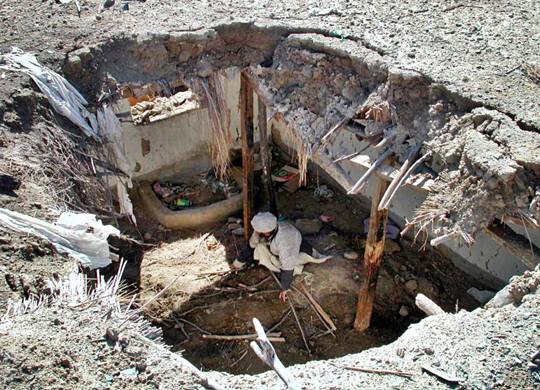
When do humans count in drone warfare, and when do they not?
I thought of this question as I read Christopher Fuller’s “See It/Shoot It: The Secret History of the CIA’s Lethal Drone Program.” Revealingly, U.S. pilots and crews who operate these drones, such as Predators and Reapers, reject the terminology of “drones” and UAV (unmanned aerial vehicle) or UAS (unmanned aerial system). They prefer the term RPA, or remotely piloted aircraft. They want to be known as the essential humans in the loop, they want to stand out, they want to count for something, and in fact the Department of Defense at various times has suggested a new “drone medal” to recognize their service.
Whereas American pilots want to stand up and be recognized as the pilots of their “remote aircraft,” the Pentagon doesn’t want to think about the targets of these drones as human beings. Civilian casualties are grouped and shrouded under the term “collateral damage,” a nasty euphemism that combines a banking term (collateral) with the concept of damage that hints at reversibility and repair. But collateral damage really means innocents blown up and blasted by missiles. Shouldn’t these humans count?
Another term that Fuller discusses is “neutralization.” The US counterterrorism goal is to “neutralize” opponents, meaning, as Fuller notes, “killing, rendition, and imprisonment.” Again, with a word like neutralization, we’re not encouraged to think of those being attacked as humans. We’re just “neutralizing” a threat, right? A terrorist, not a fellow human being. Right?
Interestingly, the whole idea of terrorism is something they do, not us. Why? Because the US defines terrorism as “premeditated, politically motivated violence perpetrated against noncombatant targets by subnational groups or clandestine agents.” Note that word: subnational. By this definition, nations do not commit terrorism, which is handy for the US, which presents its drone attacks as defensive or proactive or preemptive.
Finally, the Pentagon and the CIA are at pains to assert they take the utmost care in reducing “collateral damage” in their “neutralization” efforts. Yet as Fuller notes in his book (page 214), “the US government did not always know the identity or affiliations of those killed in its drone strikes.”
So who counts, and who doesn’t? Whose humanity is to be celebrated (pilots of RPAs?), and whose humanity (innocent victims) is to be suppressed?
Addendum: On how the US seriously undercounts civilian deaths in its air strikes, see this article.
William J. Astore is a retired lieutenant colonel (USAF). He taught history for fifteen years at military and civilian schools and blogs at Bracing Views. He can be reached at wastore@pct.edu. Reprinted from Bracing Views with the author’s permission.




One thought on “American-Style Drone Warfare and How and When Humans Count”
Comments are closed.